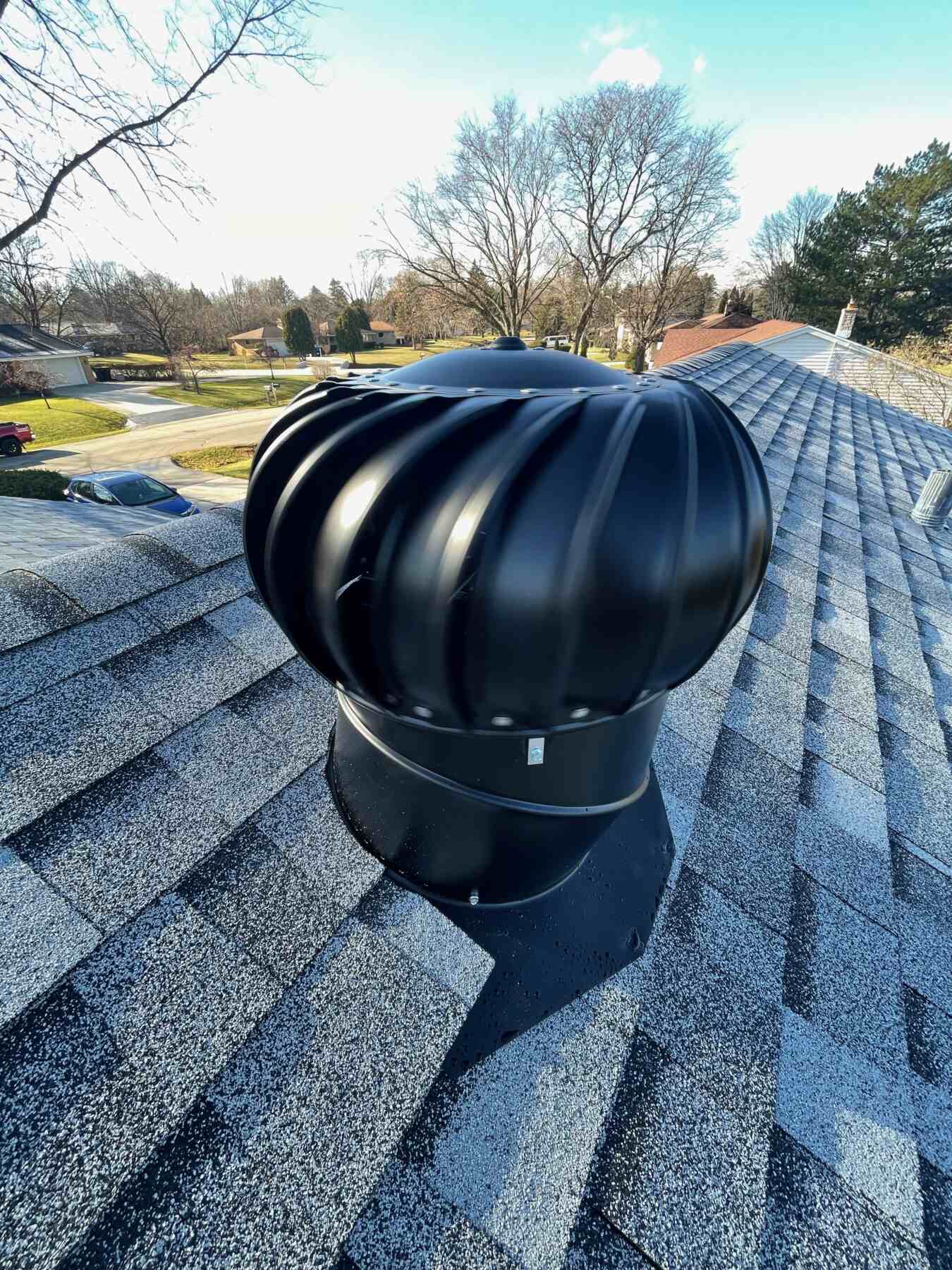Ventilation needs are changing and you don’t need to be a building scientist to understand that building materials should change also. For nearly 30 years the ridge vent has been the gold standard, but it has since fallen.
Homeowners with ridge vents are beginning to have problems.
Case in point — in the winter of 2021 and into the early spring, there were two major snow events that were heavy, wet snow. One event was 4 inches and the other was 6 inches. The average ridge vent stands about 1 inch off of a roof. When the heavy wet snow fell on roofs in the Milwaukee area, it capped off the ridge vents. As heat rose through the insulation in homeowners attics, it had no place to escape. Heat built up in attics, melting snow and resulting in exceptionally heavy ice loads on the edge of the gutters. Now only did this cause problems for gutters, but when the temperatures finally did rise, ice dams forced water into peoples homes.
It is important to recognize that a roof needs to have both intake and exhaust ventilation. If either one is clogged, or impeded in any form, a roof will not properly breathe.
Here’s what people experienced with other types of venting:

- Turbine vents (Recommended): A turbine vent typically stands about 6 to 10 inches off of a roof before the turbine, sometimes referred to as a crown, can be covered by snow. Despite the fact that our company received hundreds of calls from homeowners seeking our expertise to deal with their ice damming problems, not one call came in from a homeowner with a turbine vent. Even a gentle breeze can draw air out of an attic space with a turbine vent, improving the likelihood that the space inside of an attic would be closer to the outside temperatures. They work on a ball bearing system that can be easily swapped out should the ball bearings start to fail after 20 or so years. Turbine vents are both durable and efficient. Know it all amateurs suggest that they become rusty and have squeaking ball bearings. The reality is that todays turbine vents are often made out of aluminum which doesn’t rust, and the ball bearings just don’t squeak as claimed. Even if they were right and the ball bearings would squeak in 30 years, the crown part can be replaced by unscrewing 3 screws and screwing a new crown on.
- Gable vents (vents on the sides of their homes) did exceptionally well in the winter 2021 season as they are on a vertical exterior wall (siding) and as such could not be covered by the buildup of snow.
- Pod vents (sometimes called turtle vents) also had their exhaust vents clogged as they only stand about 2 inches off of a roof.
- Slant back vents: The exhaust part of a slant back vent is approximately 1-4” above the roof line. Many of these were covered with the 4” snowfall and all of them were covered by the 6” snow event.
In areas of Canada, there is a common hybrid vent that is essentially like a pod vent that stands 1 to 2 feet off of the roof. This allows homeowners to have heavy snow loads and still vent out their roofs. Unfortunately, as of the writing of this article, those vents are not available in the USA. Turbine vents, where practical, combine the height to avoid easy clogging from snow, with an active ventilation component of a spinning turbine that draws air out of an attic space.

